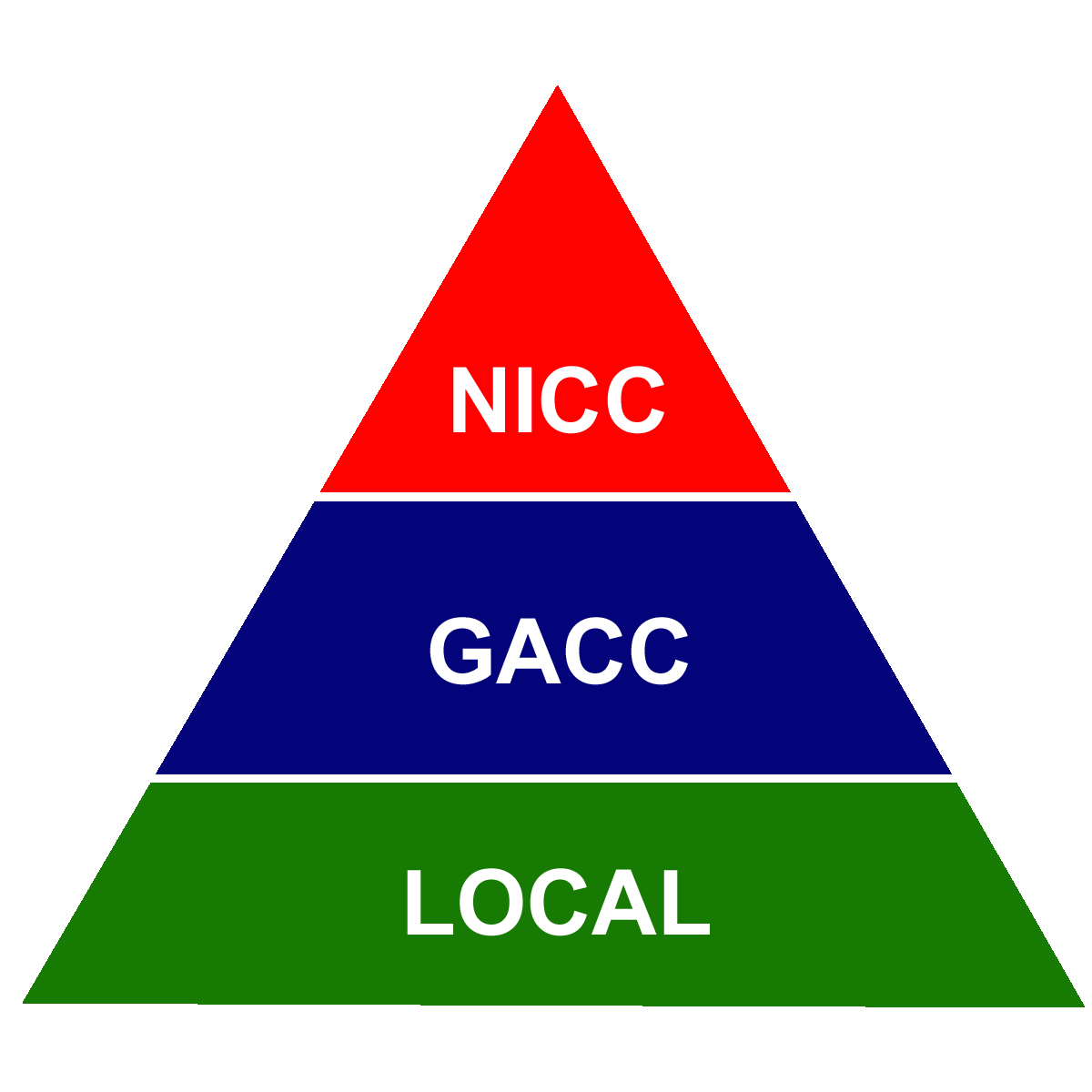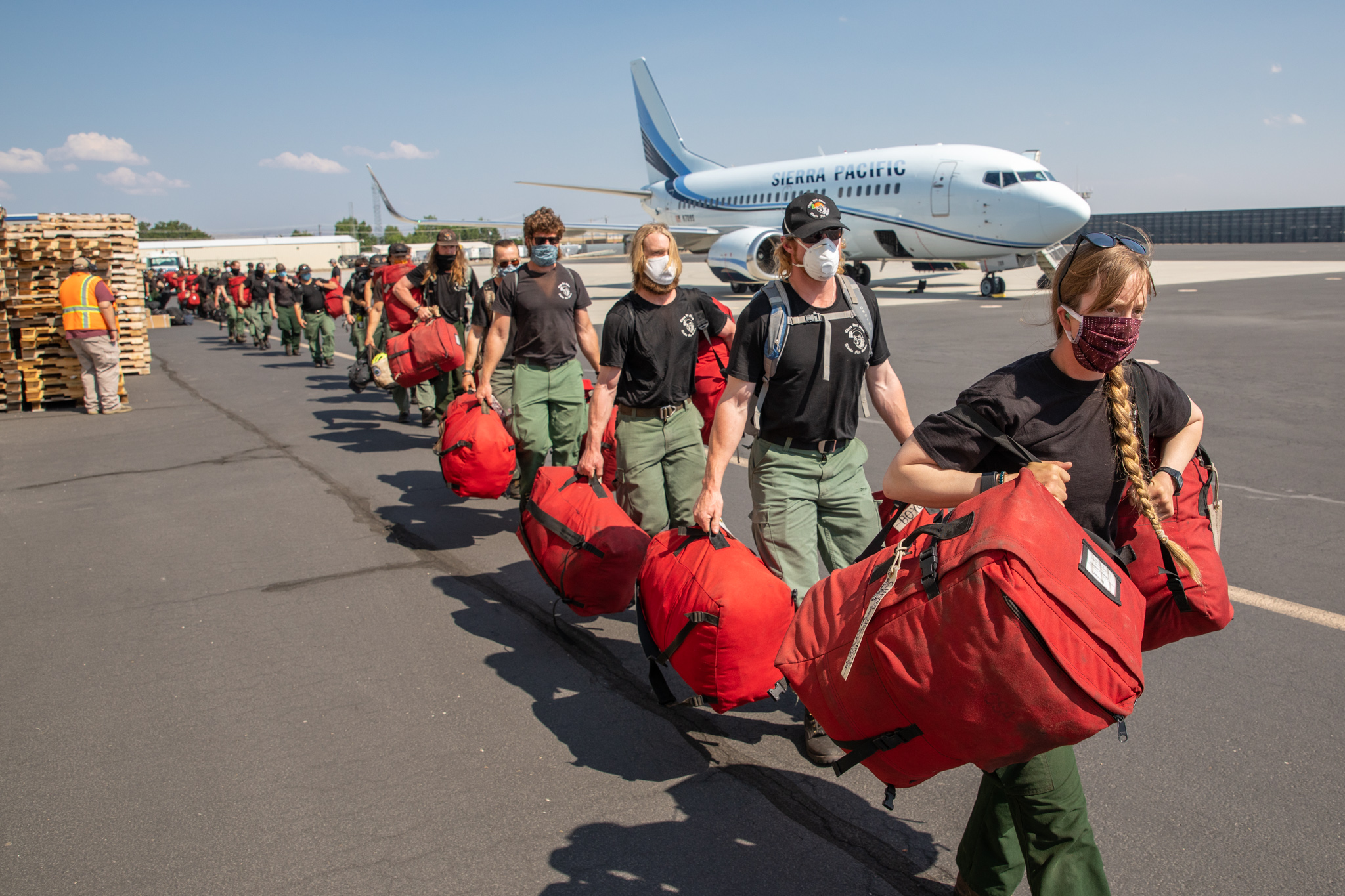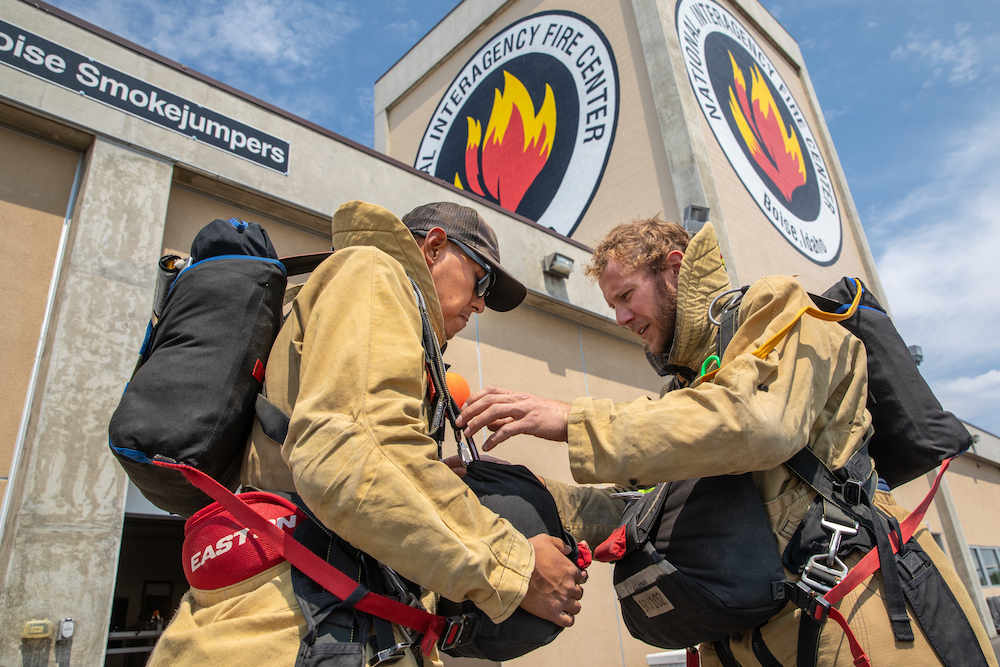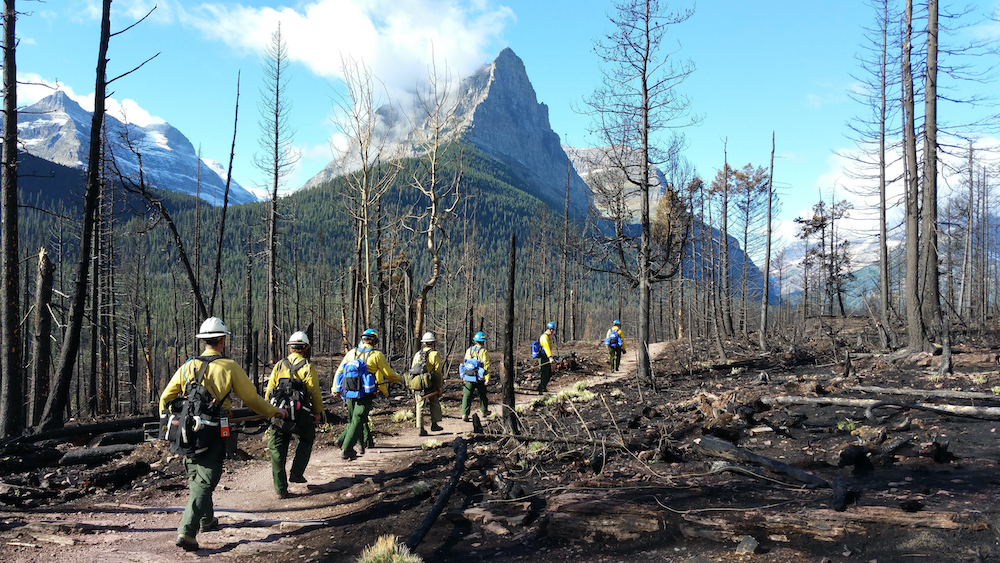How Resource Mobilization Works: Three Levels of Response
National interagency coordination is based on a three-tier system of response, including local, geographic area, and national. There are over 250 local dispatch centers across the nation, which coordinate the initial and local response to a wildfire or other natural emergency. If an incident grows in size or complexity, or there are multiple incidents in a local area, it may exhaust the capability of local teams, crews, equipment and aircraft.
Once an incident or multiple incidents exhaust local capability, additional help can be sought at the geographic-area level. Nationally, the wildfire community has established 10 such Geographic Areas. Each area has the capability to quickly mobilize additional crews, aircraft, equipment and other resources from a broader area within its geographic region.
When incident activity increases in size, numbers or complexity to a point it strains the capability of a Geographic Area Coordination Center (GACC), the National Interagency Coordination Center (NICC) provides support and assistance by mobilizing response resources across geographic areas and across the nation; from Florida to Alaska and Maine to California. Whether it’s getting an air tanker from South Dakota to Arizona, smokejumpers from Alaska to Oregon, engines from Idaho to Florida or hand crews from California to Texas, the National Interagency Coordination Center manages the mobilization of everything from a single resource to entire large incident management teams.
National Multi-Agency Coordinating Group: Setting Priorities and Managing the Big Picture
During severe fire activity, there often is competition for finite resources -- there are only so many air tankers, hotshot crews, engines and overhead teams, and the demand can be great. That’s where the National Multi-Agency Coordinating group (NMAC) comes in. Comprised of top fire managers for each of the federal and state partner agencies at NIFC (Bureau of Land Management, Bureau of Indian Affairs, U.S. Forest Service, U.S. Fish and Wildlife Service, National Park Service, the U.S. Fire Administration and the National Association of State Foresters), NMAC provides broad oversight for national response efforts and sets priorities among geographic areas regarding mobilization of national resources. NMAC doesn’t manage single fires, but provides direction over the wide spectrum of wildfire response.
The National Interagency Mobilization Guide establishes the standards for mobilization and demobilization of resources in response to wildland fire and all-hazard events. It is the foundational document instituting overarching processes for total mobility of resources. This guide is available at https://www.nifc.gov/nicc/mobguide/index.html
Predictive Services: Decision Support
A key component of the NICC is the Predictive Services Division. This group includes weather and fuels professionals who are adept at analyzing data and predicting both weather and fuel conditions that influence wildfire ignitions and the severity and spread of those fires. Through short- and long-term products, the Predictive Services personnel provide fire managers critical information to aid in decision-making on a daily, monthly and seasonal basis. This information allows the fire community to be better prepared for fire activity, including short-term prepositioning of crews, aircraft and other equipment in areas where wildfire is expected.
Predictive Services products can be found on-line at http://www.nifc.gov/nicc/predictive/predictive.htm
Incident Management Situation Report
The NICC’s Incident Management Situation Report can be found at http://www.nifc.gov/nicc/sitreprt.pdf It is produced daily during months of high fire activity and once each week during months of low fire activity.












